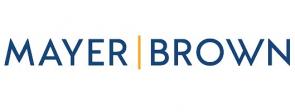This comprehensive guide delves into the transformative approaches to attorney performance reviews, focusing on modern evaluation methods to maximize potential and improve law firm success. Firms can foster real-time performance improvement by adopting a more dynamic, continuous feedback model and regular check-ins. Innovative real-time performance tracking further bolsters this approach, enabling immediate insights and timely interventions. A pivotal shift towards development-focused evaluations and the utilization of peer feedback also promotes a more comprehensive and objective understanding of an attorney's capabilities and areas for growth. Moreover, the increasing emphasis on objective metrics guarantees evaluation fairness and transparency. Finally, integrating performance reviews with training and development programs ensures that performance insights are effectively translated into targeted, personalized development plans. By implementing these best practices for attorney performance reviews, law firms can significantly enhance attorney productivity, career growth, and overall firm success.

1. What is the benefit of adopting a continuous feedback model in attorney performance evaluations?
The continuous feedback model allows for real-time performance improvement by providing immediate feedback on an attorney's performance. Frequent check-ins ensure open communication, allowing for prompt identification and resolution of issues. This model encourages a proactive and positive mindset, fosters a culture of constant improvement, and builds trust and engagement between attorneys and managers.
- While exploring modern review systems, it’s useful to contrast them with conventional practices — see the Attorney’s Guide to Law Firm Performance Reviews for a deep dive into how typical evaluations have long been structured and how attorneys often respond to difficult feedback.
2. How does real-time performance tracking contribute to attorney performance evaluations?
Real-time performance tracking provides immediate insights into an attorney's performance, allowing for quick adjustments and improvements. It enables the timely recognition of achievements and prompt addressing of performance issues. The data gathered can provide a factual basis for decisions about promotions, raises, and professional development opportunities. This approach also enables the identification of long-term performance trends, aiding in developing effective performance improvement strategies.
3. What are the key components of development-focused evaluations?
Development-focused evaluations focus on fostering professional growth rather than simply assessing past performance. They include strength-based reviews, career path discussions, the creation of personal development plans, the provision of learning and training opportunities, and the implementation of coaching and mentorship programs. Such evaluations are designed to nurture attorney talents and guide them toward their professional goals.
- Performance reviews don’t just assess performance — when tied to development and recognition, they become a key lever for retaining top legal talent, linking growth with loyalty to the firm.
4. Why is peer feedback a significant part of modern attorney performance evaluations?
Peer feedback provides diverse perspectives on an attorney's performance, enhancing the comprehensiveness of the evaluation. It fosters a learning culture and increases accountability, as attorneys know their peers observe their performance. Peer feedback also reduces bias in evaluations, as it relies on multiple input sources.
5. How does integrating performance reviews with training and development programs enhance attorney evaluations?
The integration identifies development needs from performance reviews and provides targeted solutions through training and development programs. It fosters a culture of continuous learning, ensures alignment with career aspirations, and allows tracking of progress in real-time. This integration supports the holistic development of attorneys, enhancing their capabilities and contributing to the firm's success.
The approach to performance reviews for attorneys is undergoing a seismic shift. Traditional, annual reviews are being replaced by modern approaches to attorney performance evaluation. These innovative methods aim to both assess current performance and maximize potential in attorney evaluations. With an enhanced focus on attorney development, law firms and legal employers are embracing transformative approaches to attorney reviews, fostering a dynamic, data-driven, and development-centric culture.
The Shift from Traditional Performance Reviews
Traditional performance reviews for attorneys have often been criticized for being backward-looking, infrequent, and too general. Approximately 45% of HR leaders do not believe these conventional reviews provide an accurate appraisal of an attorney's work. The need for more accurate, real-time evaluations has led many firms to rethink attorney performance assessments, moving away from outdated processes.
- Especially for attorneys with 5+ years in a firm, performance feedback can become existential — see the seven steps for mid-career attorneys who need to translate review signals into concrete career strategy.
Continuous Feedback and Regular Check-ins
As the cornerstone of modern approaches to attorney performance evaluation, continuous feedback and regular check-ins are transforming how law firms assess and improve performance. This shift represents an important part of a larger trend towards more dynamic and responsive attorney performance management strategies. This approach consists of several key elements:
- Real-Time Feedback: Instead of waiting for an annual review, managers and peers provide immediate feedback on an attorney's performance. This real-time feedback allows attorneys to quickly adjust their strategies and behaviors, leading to more rapid performance improvement.
- Frequent Check-ins: Managers schedule regular meetings with attorneys to discuss ongoing projects, challenges, and areas for improvement. These check-ins ensure that there's open and frequent communication between managers and attorneys, preventing issues from lingering unaddressed for extended periods.
- Forward-Looking Discussions: During these regular check-ins, the conversation is geared towards future performance and growth opportunities rather than focusing solely on past performance. This approach can foster a more proactive and positive mindset, encouraging attorneys to constantly strive for improvement.
- Flexibility and Personalization: Continuous feedback allows for a more tailored approach to performance evaluation. By considering individual attorney's goals, strengths, and areas for improvement, managers can provide feedback that's more relevant and actionable.
- Building Trust and Engagement: Regular check-ins and continuous feedback help build trust between attorneys and managers. Attorneys who feel their managers are invested in their growth and success are likely to be more engaged and motivated.
- Even in a modern system, feedback may sometimes sting — if you find yourself navigating criticism, check out Surviving a bad performance review for strategies to respond constructively and preserve momentum.
Real-time Performance Tracking
Real-time performance tracking is a game-changing strategy in modern approaches to attorney performance evaluation. By leveraging technology, law firms can monitor and assess an attorney's performance as it happens, thereby enhancing productivity, improving performance feedback, and enabling prompt recognition of achievements. Here's how this innovative attorney evaluation method works:- Immediate Performance Insights: Real-time tracking provides immediate insights into an attorney's performance. By using advanced technologies such as artificial intelligence and data analytics, law firms can monitor an attorney's work in real time, from the number of cases handled to the hours billed, and even client satisfaction scores. This immediate feedback can help attorneys adjust their performance in a timely manner.
- Addressing Performance Issues Promptly: Traditional annual reviews often result in delayed feedback, allowing performance issues to persist. Real-time tracking, on the other hand, enables managers to identify and address issues as soon as they arise, thus preventing minor problems from snowballing into major ones.
- Timely Recognition of Achievements: In addition to identifying issues, real-time tracking also allows for the immediate recognition of an attorney's achievements. Prompt recognition not only boosts the morale of attorneys but also motivates them to continue performing at their best.
- Data-Driven Decision Making: The data gathered through real-time performance tracking can be invaluable for decision-making. It can provide a factual basis for decisions about promotions, raises, and professional development opportunities, reducing the potential for bias or inaccurate assessments.
- Long-Term Performance Trends: By continuously monitoring attorney performance, law firms can identify long-term trends and patterns. This can provide insights into an attorney's strengths and areas for improvement, enabling more targeted and effective performance improvement strategies.
The feedback structure you set now may influence one of the most important career decisions a lawyer makes down the line — whether to stay, move firms, or specialize.
Real-time performance tracking signifies a major advancement in attorney performance appraisal trends. With its ability to provide immediate insights and encourage prompt actions, this approach plays a crucial role in enhancing attorney performance and productivity. For a visual complement to modern review techniques, watch An Associate’s Guide to Law Firm Performance Reviews to see these concepts in action.
See Related Articles:
- An Associate’s Guide to Law Firm Performance Reviews (Including Getting a Bad Law Firm Performance Review)
- 7 Effective Tips for Attorney Performance Evaluations: A Comprehensive Guide for Lawyers and Law Students
- Surviving a Bad Performance Review
Development-Focused Evaluations
Development-focused evaluations represent a paradigm shift in how law firms approach attorney performance reviews. Moving beyond simply assessing an attorney's past performance, these evaluations focus on fostering professional growth and unlocking future potential. Let's examine the crucial components of development-focused evaluations:- Strength-Based Reviews: By focusing on an attorney's strengths rather than solely on their weaknesses, firms can help individuals realize their full potential. A strength-based approach encourages attorneys to leverage their unique skills and abilities, promoting a sense of competence and engagement.
- Career Path Discussions: Regular dialogues about career aspirations and growth opportunities are integral to development-focused evaluations. By understanding an attorney's long-term goals, managers can provide meaningful support and guidance to help them reach these objectives.
- Personal Development Plans: These evaluations often result in the creation of personal development plans for attorneys. These plans outline a strategy for growth, including specific skills to develop, areas to improve, and goals to achieve. They serve as a roadmap for an attorney's professional journey.
- Learning and Training Opportunities: Development-focused evaluations identify gaps in an attorney's skills or knowledge, which can then be addressed through targeted learning and training opportunities. This could include mentorship programs, workshops, online courses, or on-the-job training.
- Coaching and Mentorship: Alongside training, coaching and mentorship play a crucial role in development-focused evaluations. Experienced attorneys or managers can provide personalized guidance, helping individuals navigate challenges and accelerate their professional growth.
Utilizing Peer Feedback
Peer feedback is another key feature of the modern approaches to attorney performance evaluation. Going beyond managerial reviews, peer feedback gathers insights from a variety of stakeholders to create a more comprehensive performance picture. This 360-degree feedback model plays a vital role in fostering a culture of transparency and collaboration in law firms. Here are the key components of a successful peer feedback system:For newly hired attorneys, performance reviews begin the day they join — see surviving in a new law firm job to understand how early feedback and cultural adaptation interplay with review expectations.
- Diverse Perspectives: Peer feedback provides a multi-dimensional view of an attorney's performance. It draws upon the unique perspectives of colleagues, subordinates, and even clients, who may each notice different strengths and areas for improvement in an attorney's work.
- Enhancing Collaboration and Teamwork: Regular exchange of peer feedback encourages attorneys to collaborate more effectively. It promotes an understanding of how their actions impact others in the team, thus nurturing a collaborative work environment.
- Fostering a Culture of Learning: Peer feedback encourages attorneys to learn from each other's successes and mistakes. It provides constructive criticism that helps attorneys understand where they can improve and offers recognition for achievements, boosting morale and motivation.
- Increasing Accountability: When peer feedback is part of the performance review process, attorneys become more accountable for their actions. They become aware that their performance is being observed by their peers, which can encourage them to strive for excellence.
- Reducing Bias in Reviews: Peer feedback can help to reduce bias in performance evaluations. By gathering feedback from multiple sources, firms can ensure that the performance review is not skewed by one person's perception.
- To put theory into action, you may also want to refer to the 7 effective tips for attorney performance evaluations — these practical strategies align with agile review models discussed here and help attorneys embed feedback practices daily.
Emphasis on Objective Metrics
Objective metrics are increasingly taking center stage in modern attorney performance evaluation techniques. They provide a quantifiable, evidence-based approach to performance assessment, minimizing biases and promoting fairness. In this section, we delve into why an emphasis on objective metrics is becoming a standard in attorney performance appraisal trends and the key metrics that are commonly used.- To deepen the link between evaluation and reward, firms should consider how compensation structures affect lawyer retention — a well-designed incentive scheme ensures that performance outcomes meaningfully translate to career progression.
The Importance of Objective Metrics in Attorney Performance Reviews
Accuracy and Fairness: Objective metrics provide an accurate and fair representation of an attorney's performance. They eliminate subjective biases that can influence evaluations, ensuring that performance reviews are based on hard data rather than personal opinions.- Transparency: When performance reviews are based on clear, objective metrics, it's easier for attorneys to understand how their performance is evaluated. This transparency can lead to increased trust in the review process and heightened motivation to improve.
- Goal Alignment: Objective metrics can be tied to the firm's strategic goals, helping attorneys understand how their individual contributions support the firm's overall objectives. This connection fosters a sense of purpose and commitment.
Beyond base pay and bonuses, feedback systems must dovetail with law firm benefits programs — a strong benefits package amplifies the motivational impact of performance reviews and helps firms become more attractive to top attorneys.
Key Objective Metrics Used in Attorney Performance Reviews
- Billable Hours: One of the most traditional metrics, billable hours provide a measure of an attorney's work output. It is a straightforward way of gauging the quantity of work done by an attorney.
- Client Satisfaction Scores: In today's client-centric legal environment, client satisfaction scores are an important indicator of an attorney's performance. High satisfaction scores reflect an attorney's ability to deliver quality service and build strong client relationships.
- Case Win Percentages: For attorneys involved in litigation, case win percentages provide a concrete measure of their success. High win rates suggest strong legal skills and strategic thinking.
- Business Development Contributions: This includes the new business an attorney brings to the firm or the growth of existing client relationships. It is a crucial metric that reflects an attorney's ability to contribute to the firm's financial growth.
Integration of Performance Reviews with Training and Development Programs
Integrating performance reviews with training and development programs is an essential step in maximizing potential in attorney evaluations. This strategic alignment not only identifies performance gaps but also provides targeted solutions to bridge these gaps, fostering performance improvement for attorneys and nurturing their professional growth.
- Identification of Development Needs: Through performance reviews, law firms can identify an attorney's strengths and weaknesses. These insights are crucial for tailoring development programs to address specific areas of improvement, such as communication skills, leadership capabilities, or legal expertise.
- Personalized Training Plans: Once development needs are identified, personalized training plans can be created. These plans provide attorneys with a clear path towards improvement, detailing the specific skills to be developed, courses to be completed, and goals to be achieved.
- Continuous Learning Opportunities: By integrating performance reviews with development programs, firms can foster a culture of continuous learning. Regular reviews can highlight new areas for development, ensuring that attorneys continue to grow and adapt in their roles.
- Alignment with Career Aspirations: Performance reviews can provide insights into an attorney's career aspirations. These insights can be used to shape development programs that align with these aspirations, enhancing job satisfaction and engagement.
- Tracking Progress and Adjusting Strategies: Integration allows for the monitoring of an attorney's progress in development programs and adjustment of strategies based on this progress. This allows for real-time tweaks and improvements to the development plan.
The Future of Attorney Performance Reviews
The future of attorney performance reviews involves a more holistic approach. Firms are increasingly evaluating lawyer performance in modern times by looking beyond billable hours to encompass leadership skills, client relationships, and business development efforts. These performance-driven attorney assessments provide a more comprehensive view of an attorney's contributions.
Conclusion
Transforming performance reviews is a vital evolution within the legal industry. The modern approaches adopted are effectively enhancing attorney productivity through reviews, making performance evaluations a key tool in assessing attorney potential effectively. As firms move towards these progressive practices, they are better equipped to nurture talent, drive team motivation, and encourage enhanced attorney career growth through reviews.
- Modern review systems require more than process change — they demand culture shift and ongoing mindset evolution. For broader perspective, check out 21 pieces of career advice no one gives attorneys, which touches on resilience, feedback, and professional growth.




